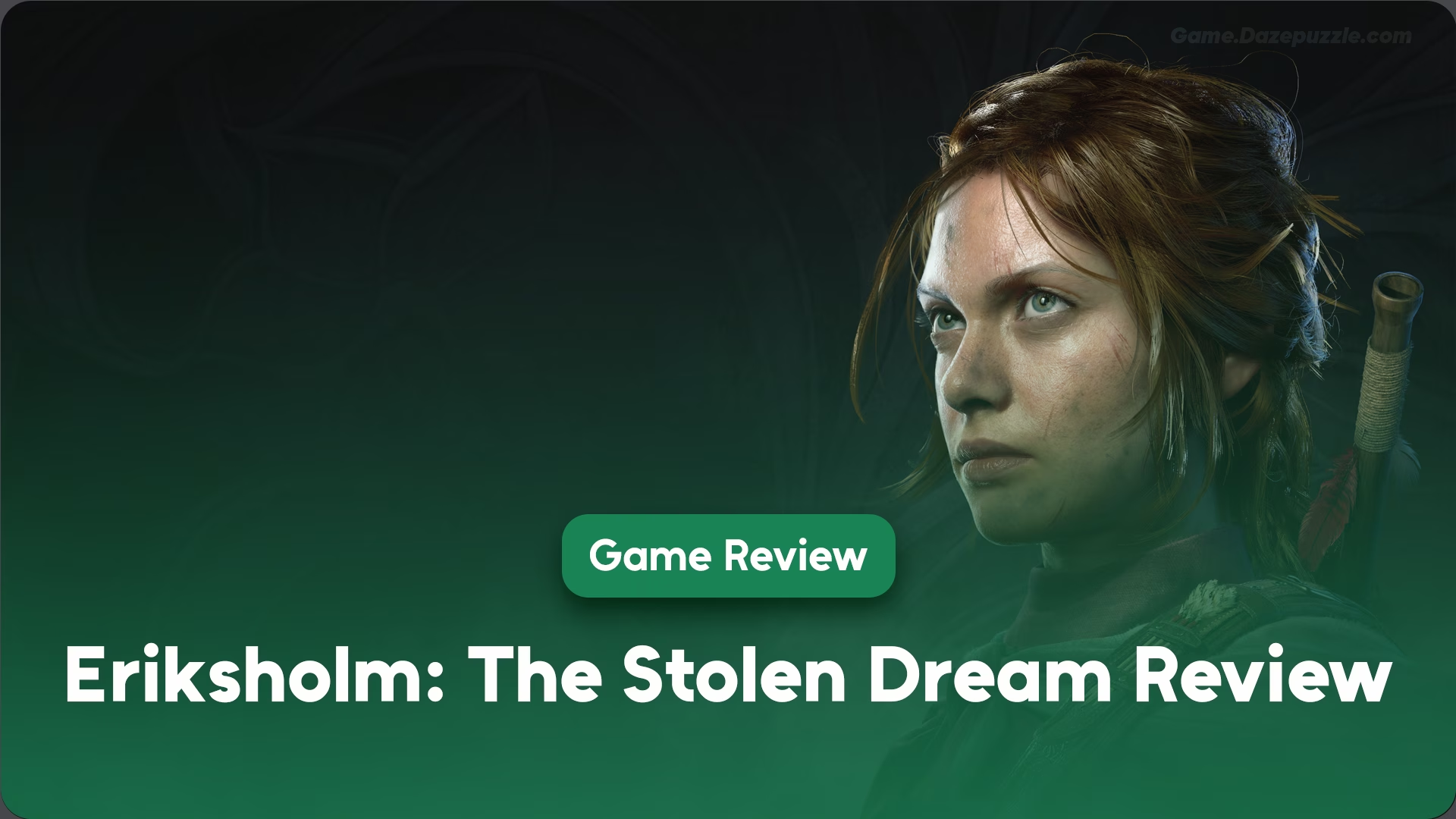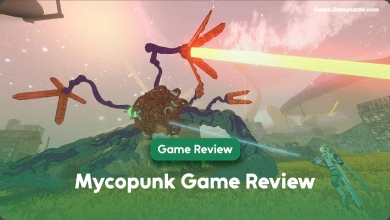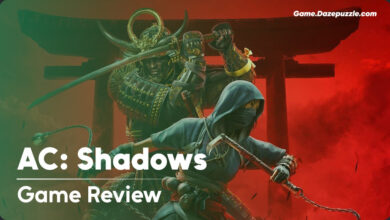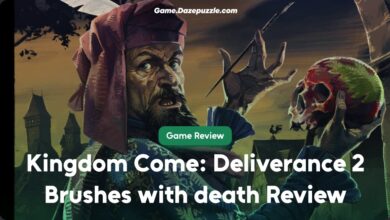Some games arrive with a whisper, quietly finding their audience over time. Others crash onto the scene like a tidal wave, sparking debate, dividing opinions, and leaving everyone asking the same question: is this thing actually any good? Eriksholm: The Stolen Dream is firmly in the second camp. It emerges into a world holding its breath. The throne of tactical stealth sits empty, still warm from the recently departed masters at Mimimi Games, and the silence is deafening.
Fans of Shadow Tactics and Desperados III are starved for a worthy successor, scanning the horizon for any sign of hope. And then comes Eriksholm, a AAA cinematic marvel with a prestige drama sound, built by veterans from giants like Battlefield and Mirror’s Edge. On paper, it’s not just a contender; it’s the heir apparent.
Yet, the reception has been anything but a simple coronation. For every glowing 10/10 score celebrating a masterpiece, there’s a frustrated 4/10 decrying a betrayal of the genre. The community is split down the middle, locked in a debate born from a fundamental clash of philosophies. Is this the grand evolution of stealth, a story driven epic that pushes tactical gameplay into a new, emotional frontier? Or is it a stunningly beautiful, but painfully restrictive, diorama that misunderstands the very essence of player freedom? The truth is, it might be both.
This Eriksholm The Stolen Dream game review isn’t here to just give you a score. It’s here to dissect the game’s controversial heart, lay its intricate pieces out on the table, and help you discover which side of this beautiful, broken city you’ll call home.
Table of Contents
Welcome to Eriksholm: A City That Breathes and Suffocates
Before you even think about the gameplay, Eriksholm the city grabs you and refuses to let go. The art direction is, without exaggeration, one of the most cohesive and breathtakingly realized visions in recent memory. The developers have coined the term “whalepunk” to describe its aesthetic, and it’s brilliantly fitting. Imagine the early 20th century, but with its industrial revolution powered entirely by the whaling industry. Greasy, steam belching engines hiss and clank, and the skeletal frames of suspended cable cars cast long shadows as they glide over cobbled streets.
The architecture feels distinctly Nordic, all sharp angles and weathered wood, huddled together against the cold. The air itself is a character, a thick, briny concoction of sea salt, coal smoke, and the faint, metallic tang of whale oil that clings to everything. If you’ve played Dishonored, you’ll feel a flicker of familiarity in its industrial grime, but Eriksholm trades Dunwall’s overt gothic dread for a melancholic, almost painterly beauty.
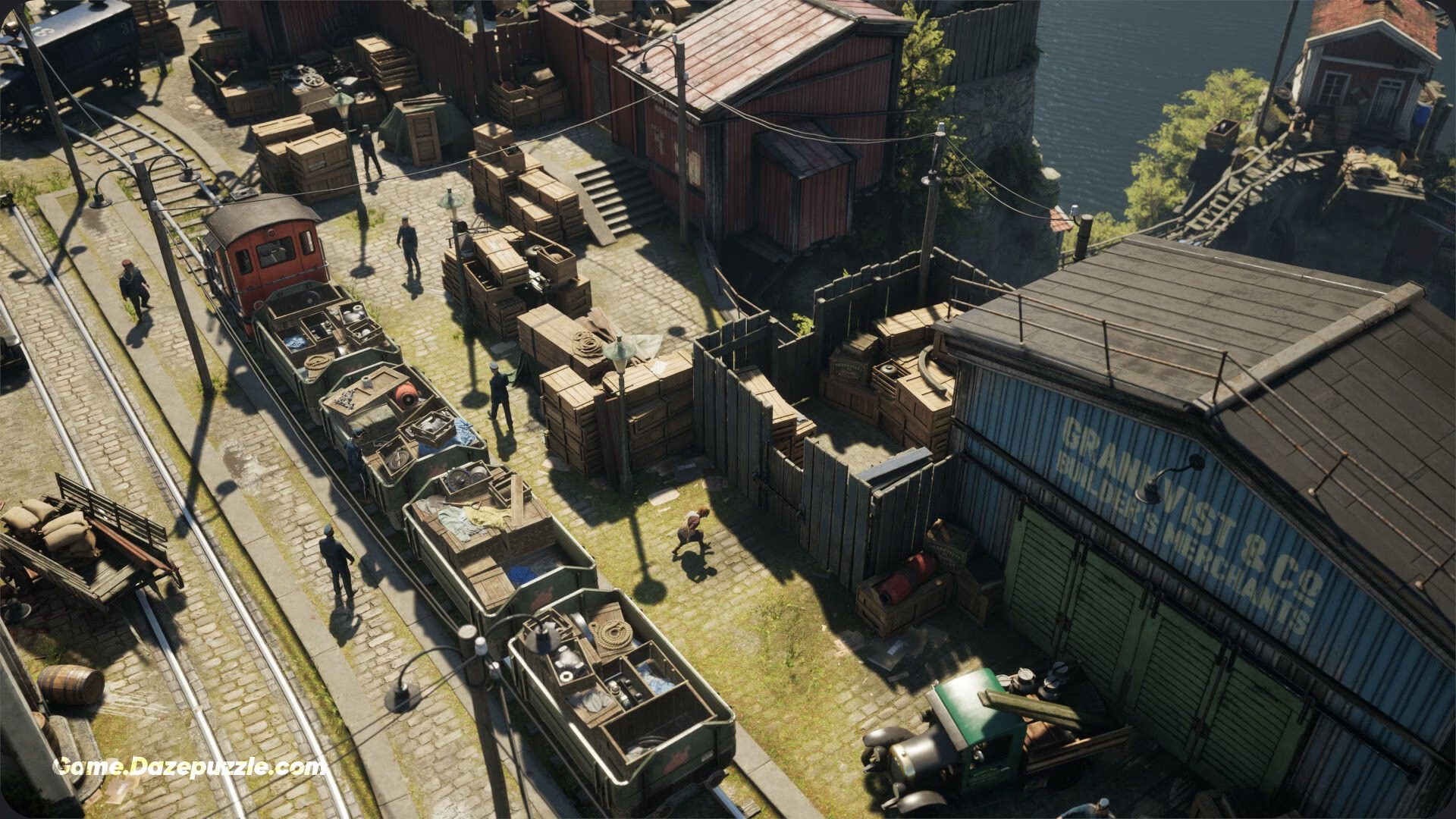
This unique atmosphere is no accident. The team at River End Games, based in Gothenburg, Sweden, drew direct inspiration from their own Nordic cities but filtered it through an unexpected lens: the legendary animation house Studio Ghibli. Specifically, they aimed to capture the “larger than life” feel of the architecture in Kiki’s Delivery Service, creating a world that feels grounded and familiar, yet dreamlike and slightly fantastical.
This Ghibli esque touch extends beyond just the buildings; it’s in the soft, expressive faces of the characters and the way light spills into a dark alley, transforming it from threatening to magical. This explains the game’s visual paradox: a dark, oppressive story of corruption and plague set in a world that often looks like a watercolor painting come to life.
Powering this vision is Unreal Engine 5, and the team has used its tools to punch far above their weight class. The cinematic cutscenes, crafted with MetaHuman technology, feature a level of facial animation and emotional subtlety that rivals studios with hundreds of employees and massive budgets. This focus on cinematic storytelling is the first major clue to the game’s design. The team of fewer than 20 developers made a strategic choice: to pour their resources into polishing a focused, narrative driven experience rather than building a sprawling, systemic sandbox.
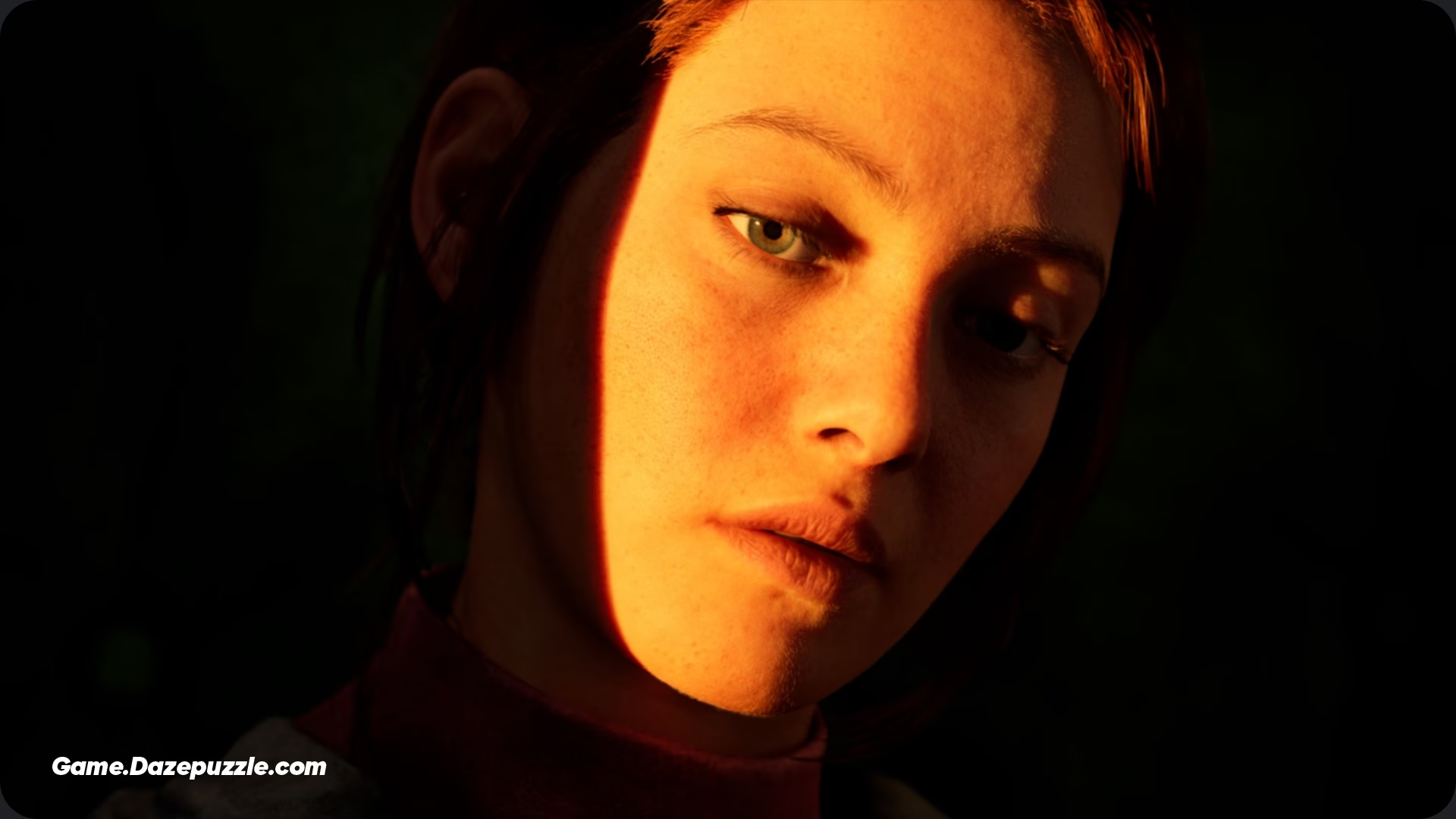
The city itself is a character, defined by its oppressive verticality. Inspired by Italian hillside villages, the developers intentionally designed Eriksholm to be a multi-layered maze. The isometric camera could have easily made the world feel flat, but instead, you’re constantly looking up at towering, inaccessible rooftops and down into murky, winding sewer canals. These tight alleys, precarious ledges, and hidden passages aren’t just for show; they are the very fabric of the game’s movement-based puzzles.
A simple locked door at street level might force you to find a drainpipe for Alva to climb, so she can reach a balcony and create a distraction for a guard, allowing Hanna to slip into a vent that leads into the locked room. The city’s design constantly forces you to think in three dimensions, turning its architecture into both your playground and your prison.
A Story of Family, Corruption, and Hope
At its core, Eriksholm tells a simple, powerful story. You play as Hanna, a young orphan whose brother, Herman, has mysteriously vanished and is now wanted by the city guard. Her personal quest to find him quickly spirals into a much larger conspiracy involving the city’s powerful elite and a devastating plague known as the “Heartpox,” which serves as a grim metaphor for the social sickness consuming the city from within.
The story is told through three playable characters, each representing a different facet of Eriksholm’s oppressed society:
- Hanna: The resourceful survivor. As a child of the streets, her superpower is her intimate knowledge of the city’s hidden pathways. She represents the personal, familial drive at the heart of the conflict.
- Alva: The Firebrand. More than just a leader, she’s the spark of rebellion in a city drowning in despair. She represents the fight back, the political anger against the boot of corruption.
- Sebastian: The reluctant worker. A solitary man of immense physical strength, he represents the downtrodden working class initially isolated, but ultimately drawn into the fight.
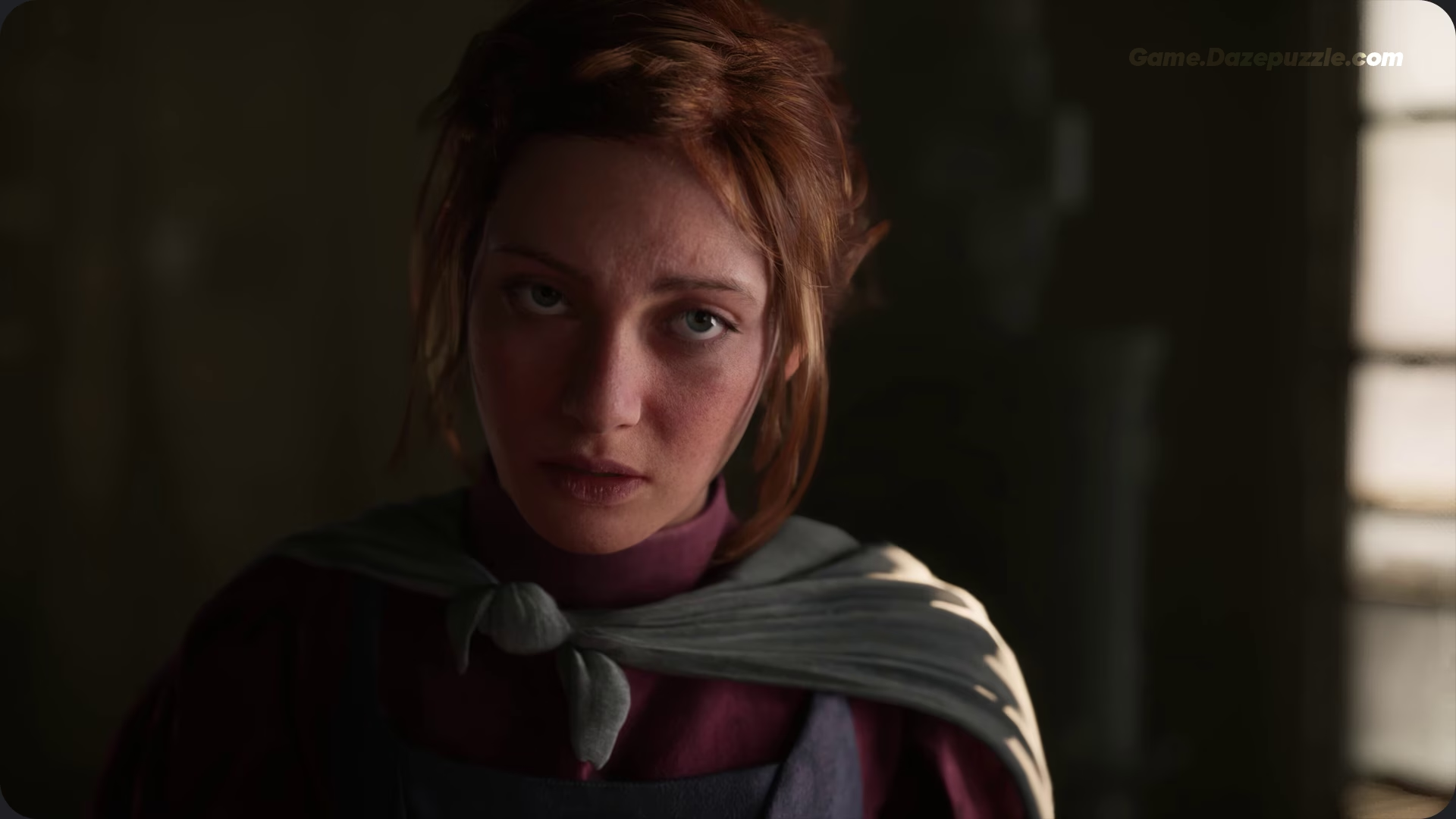
The narrative explores heavy themes of class warfare, brutal working conditions, and the corruption of an untouchable upper class. But it also finds moments of light. The early chapters are particularly praised for showing a natural sense of community, where ordinary citizens help Hanna evade the police, seeing them as an unwelcome, foreign presence.
The high quality voice acting and sharp script create believable characters, and the world is fleshed out by small stories you overhear from NPCs, making the city feel truly alive. However, the plot isn’t without its weaknesses. Some critics have found the major story twists to be predictable and the main villain’s motivations underdeveloped, feeling as though the narrative occasionally rushes past key details.
How It Plays: The Great “Puzzle Box” Debate
This is where we get to the heart of the matter, the gameplay that has so thoroughly divided players. To get Eriksholm, you have to get inside the developers’ heads and understand their core philosophy. Creative Director Anders Hejdenberg stated that the goal was not to create a sandbox like Hitman, but a “puzzle box.” The intended feeling is that of a spirit gliding through a complex web of obstacles, executing a single, perfect plan. This concept is the key that unlocks everything else.
The Power of Three: Synergistic Stealth
The core gameplay loop is built around the synergy between the three characters. This is not a game about individual skill; it’s about teamwork. You will fail, repeatedly, if you try to have one character solve a problem alone. Their abilities are designed to interlock, creating a sequence of actions that, when performed correctly, feels incredibly satisfying.
- Hanna (The Infiltrator): As the smallest and most agile, Hanna is your scout and infiltrator. Her primary skill is her ability to crawl through small ventilation ducts, giving her access to locked rooms and hidden areas. She can unlock doors from the inside for her companions. Her blowpipe, armed with temporary sleeping darts, is perfect for neutralizing a single, isolated guard to create a brief window of opportunity.
- Alva (The Distraction): Alva controls the flow of the battlefield from a distance. Using her slingshot, she can create noise distractions to lure guards away from their posts, break lights to create new pockets of shadow, or trigger environmental hazards. Her ability to climb drainpipes and get to rooftops gives her the perfect vantage point to support her allies from above, setting the stage for their moves.
- Sebastian (The Enforcer): Sebastian is the muscle. He is the only character capable of permanently dispatching a guard with a silent takedown. He’s also the only one who can swim, opening up unique routes through the city’s canals. However, his actions are loud and risky. A successful takedown almost always requires setup from Alva or Hanna—a distraction to look the other way, or a simultaneous takedown of a second guard.
A typical successful sequence feels less like a fight and more like a perfectly timed, three-person heist. Alva, perched on a rooftop, launches a stone that clatters across the cobblestones, pulling the gaze of a guard. As his head turns, Hanna, hidden in the shadows below, fires a sleeping dart into the neck of his partner. In that fleeting, five second window of chaos, Sebastian emerges like a phantom, permanently removing the distracted guard and dragging the body into an alley before anyone is the wiser. When it all clicks into place, it’s a sublime rush, the quiet satisfaction of a flawless plan executed to perfection.
The Unforgiving Path: Insta-Fail and Linearity
And now for the game’s most controversial feature. Eriksholm is brutally unforgiving. There are no traditional vision cones. Instead, a detection meter fills up when a guard spots you. If it fills completely, it’s game over. Instantly. You’re sent back to the last checkpoint. There is no fighting back. There is no running away.
This ‘insta-fail’ system is the game’s most rigid and demanding teacher. It reinforces the ‘puzzle box’ nature of the game by eliminating any possibility of improvisation. Your goal is not to creatively escape a bad situation; it’s to rewind time and find the single, perfect solution the developers designed. This transforms gameplay into a meticulous loop of trial, error, and eventual execution.
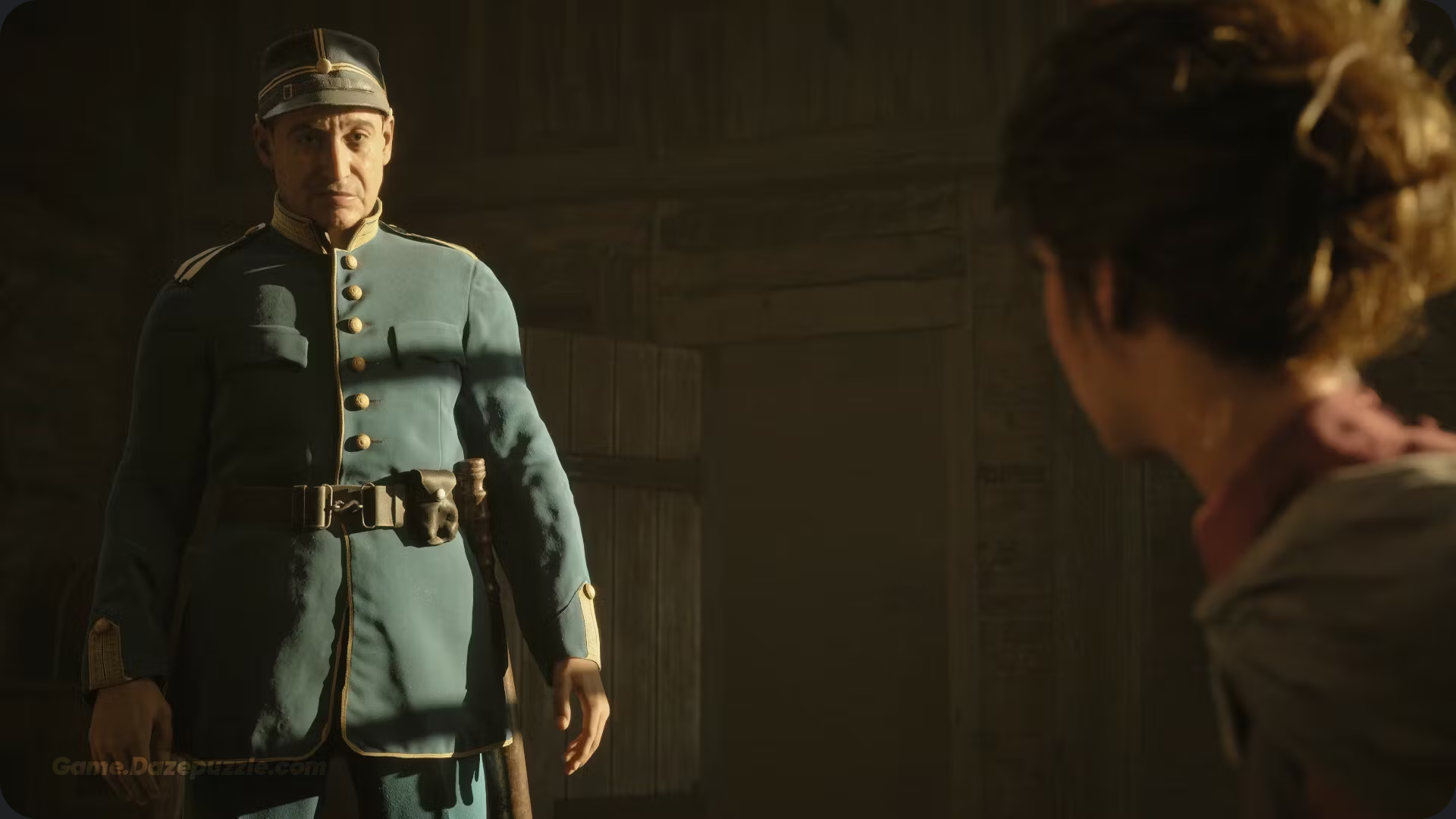
For some, this process of cracking a complex code is immensely rewarding; for others, it feels like a frustrating exam where only one answer is accepted. For some, solving the intricate puzzle is immensely rewarding. For others, it feels like the game is holding your hand and leading you by the nose, punishing any deviation from its prescribed path.
This philosophy redefines what “good AI” means in a stealth game. The guards in Eriksholm are praised for having believable patrols and organic conversations. But this believability isn’t meant to create a dynamic simulation. It’s meant to make them readable, predictable components of the puzzle. Their conversations aren’t just flavor text; they are often explicit clues on how to solve the puzzle ahead.
The insta-fail isn’t a failure of stealth simulation; it’s the consequence of inputting the wrong answer to the puzzle. Those who see the game as a puzzle praise this design. Those who came expecting a traditional stealth sandbox find it shallow and restrictive.
Finding Its Place: Is Eriksholm the Next ‘Desperados’ or ‘A Plague Tale’?
A direct comparison to Mimimi’s games, while inevitable, is ultimately misleading. Shadow Tactics and Desperados III are systemic sandboxes. They give you a box of tools and a large, open level, and they delight in the emergent, creative, and often chaotic solutions you come up with. Eriksholm is the polar opposite. It is a handcrafted, linear, narrative first experience.
The key to unlocking Eriksholm isn’t comparing it to its tactical peers, but to a narrative sibling: A Plague Tale. Both games feature a vulnerable protagonist trying to protect a sibling. Both are set in societies ravaged by plague. Both are intensely story driven, with gameplay that exists to serve the narrative, not the other way around. Both are linear experiences that guide you from one stunningly crafted set piece to the next. If you think of Eriksholm not as a failed real-time tactics game, but as a successful narrative adventure with isometric stealth-puzzle mechanics, it suddenly makes perfect sense. It’s not trying to replace Mimimi; it’s creating a new hybrid genre: the Cinematic Stealth Puzzler.
Tech Check: Performance on PC and Steam Deck
On a technical level, Eriksholm is a triumph. The game is exceptionally well optimized on PC, capable of running at very high frame rates on powerful hardware. This is a remarkable achievement for such a small development team.
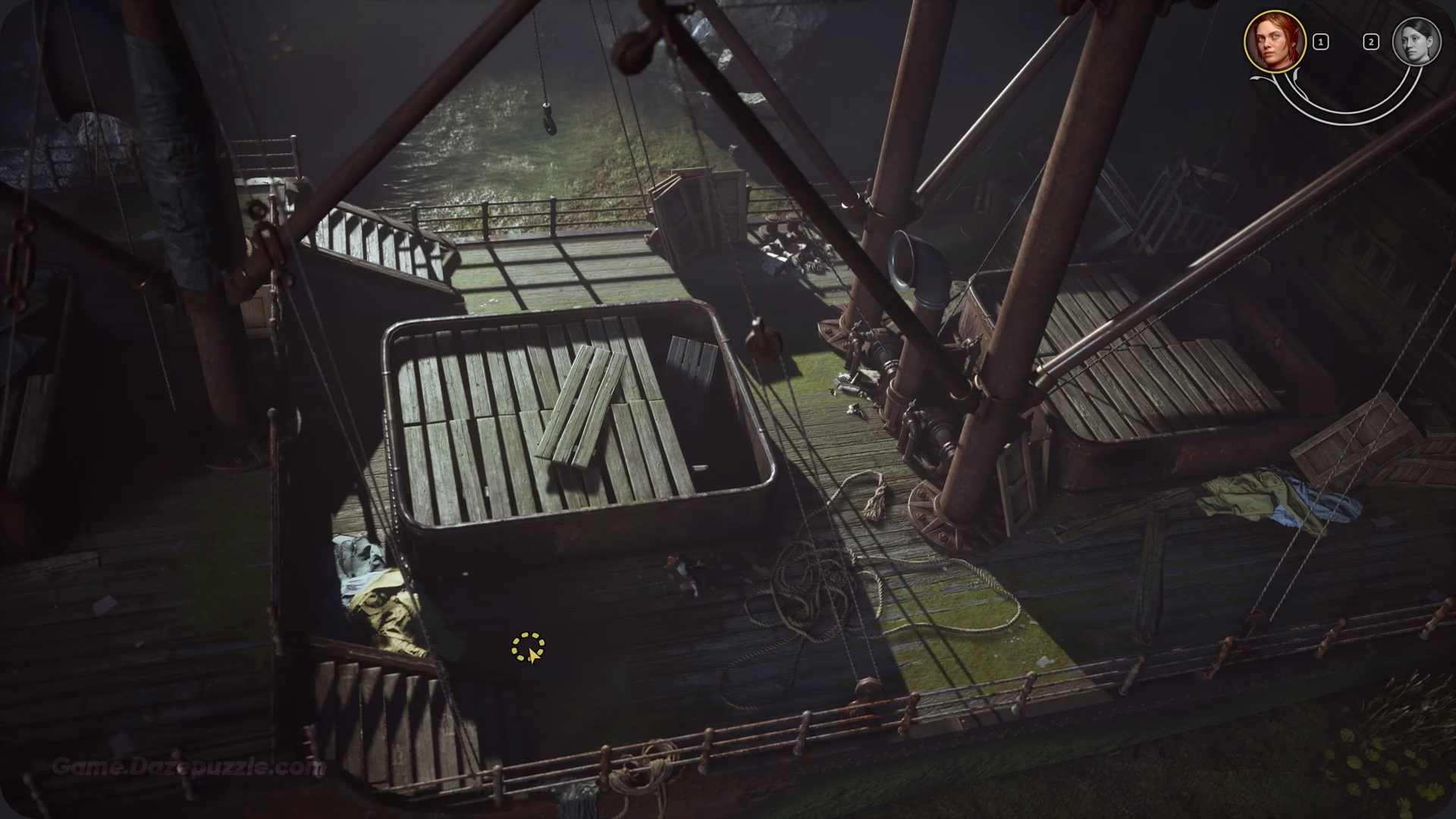
Even more impressive is its performance on the Steam Deck. The game is “Verified” and runs beautifully on the handheld, reportedly holding a stable 40-45 FPS on high settings. This makes it a fantastic portable experience, and a huge selling point for the massive Steam Deck community. While console performance reviews are less common, the strong PC optimization suggests that the Xbox Series X/S and PS5 versions should also provide a smooth experience.
The Final Verdict: Who Should Journey to Eriksholm?
Eriksholm: The Stolen Dream is a resounding success in achieving its artistic and narrative vision. It is a stunningly beautiful game with a compelling world and an engaging story. However, whether it succeeds as a game for you depends entirely on your tolerance for its rigid, puzzle oriented design. It is a masterpiece within the cinematic stealth puzzle subgenre it carves out for itself, but it is not the creative stealth sandbox that some may have been hoping for.
Buy It If…
You love narrative driven adventures like A Plague Tale or The Last of Us. You enjoy high quality cinematic storytelling and get satisfaction from solving complex, logic-based puzzles that have one correct, elegant solution. If the idea of a beautiful, handcrafted, linear stealth experience sounds appealing, you will likely consider this a masterpiece.
Be Cautious If…
You are a veteran of games like Shadow Tactics, Desperados III, or Hitman. If you value player freedom, emergent gameplay, and the ability to improvise creative solutions, you will almost certainly find the game’s linearity and restrictive mechanics frustrating. The insta-fail system may feel punishing rather than challenging.
Ultimately, the best advice is this: play the free demo available on Steam. It is the perfect litmus test, a single dose of the game’s unique medicine. Within an hour, you will know for certain which side of the wall you stand on. You’ll have your answer: Is Eriksholm a beautiful prison you’re desperate to escape, or a brilliant puzzle you can’t wait to solve?
Eriksholm: The Stolen Dream Steam Page
Thanks for keeping up with Game.Dazepuzzle.com
Eriksholm: The Stolen Dream is a narrative-driven, isometric stealth game set in the fictional city of Eriksholm, which is inspired by early 20th-century Scandinavia.
Players control the protagonist, Hanna, who is searching for her missing brother, Herman. As she investigates his disappearance, she uncovers a much larger conspiracy. The gameplay focuses on strategic, top-down stealth, where you must observe enemy patterns, use the environment for cover, and utilize the unique abilities of Hanna and other characters she allies with to solve environmental puzzles and advance the story.Eriksholm: The Stolen Dream Review
Gameplay - 8.5
Story/Narrative - 8
Graphics/Visuals - 9
Sound/Music - 8.5
Content/Value - 8
8.4
10

